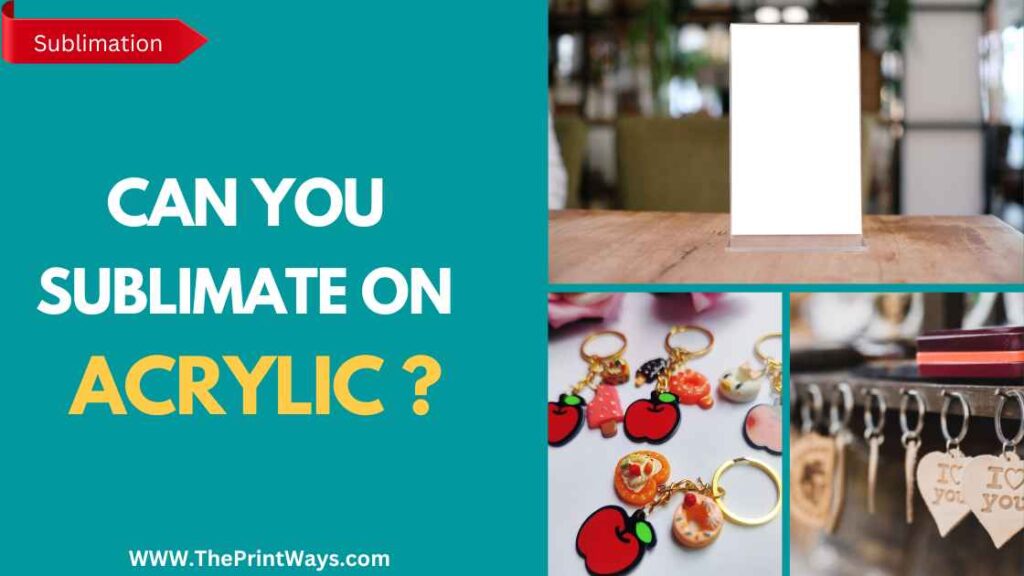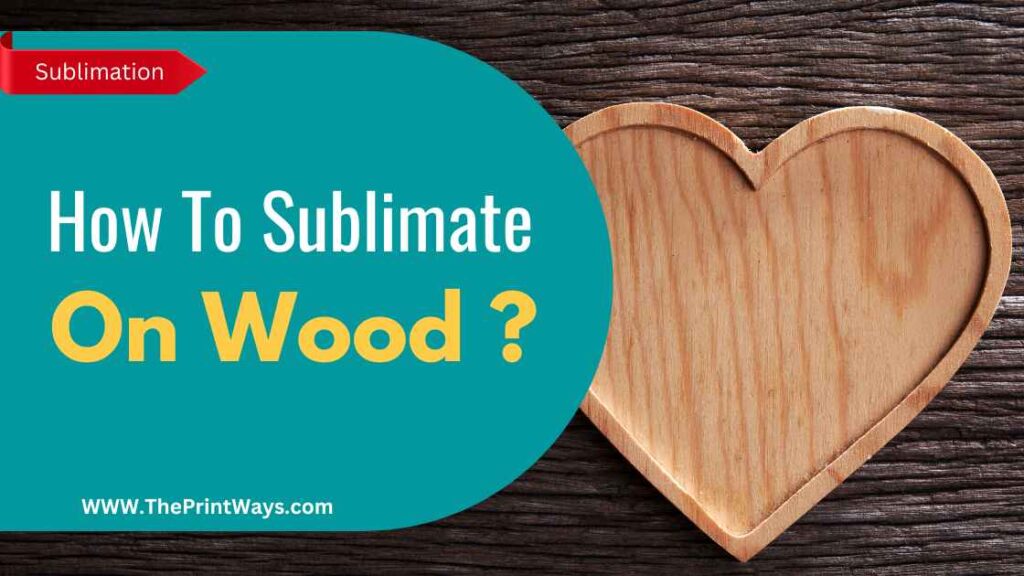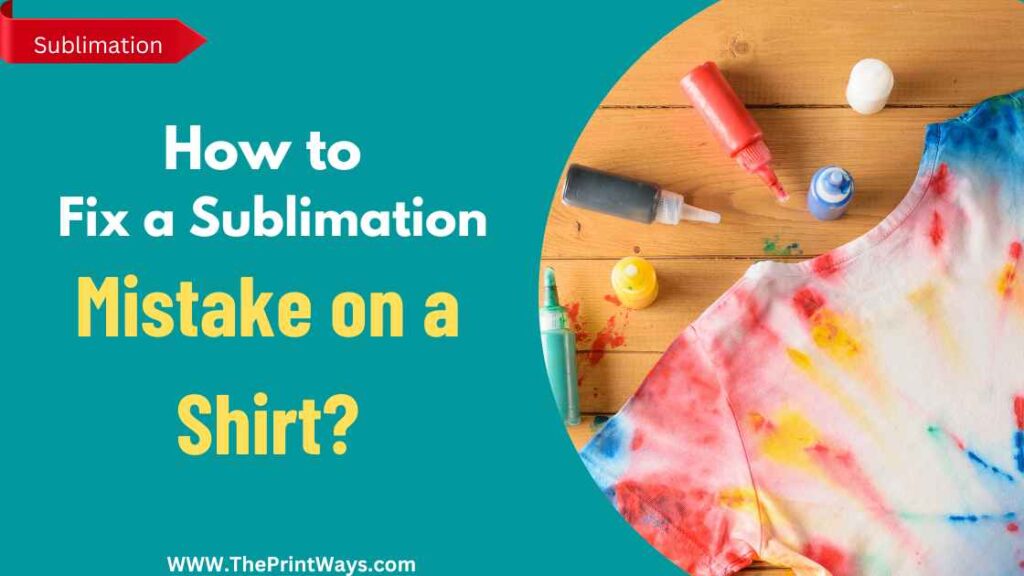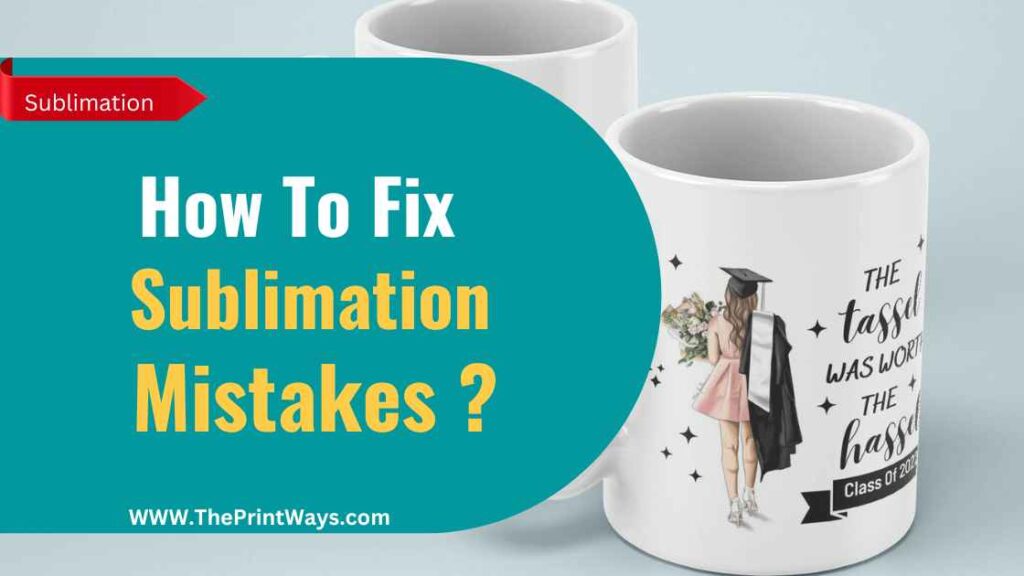Sublimation printing is widely used because it is an efficient method of transferring ink to a fabric (usually polyester or a polyester blend) using heat. Designers and company owners alike love this method because of its adaptability and the vivid, long-lasting designs it produces.
But Can you sublimate over sublimation? What about sublimating sublimation? Those who want to customise or alter an existing sublimation product frequently ask this. We’ll discuss whether or not it’s possible to sublimate over sublimation, and if so, what considerations should be made.
Can you Layer Sublimation ?
Absolutely, you can stack sublimation! Layering sublimation is the process of printing many layers of ink onto the same surface to create a more intricate design.
One method is to print each layer separately on sublimation paper and then transfer each layer onto the surface one at a time. Be sure to properly align each layer to ensure that the final design is sharp and clear.
Layering sublimation can be more time-consuming and precise than a single-layer print. Also, the more layers you add, the more likely it is that the design will become hazy or deformed. As a result, it’s critical to practise and experiment to discover the correct balance for your design.
Related Post: How to fix sublimation mistakes ?
Can You Sublimate Over Sublimation?
Now that we understand the fundamentals of sublimation, let’s answer the question: is it possible to sublimate over sulimation? No, you cannot sublimate an item that has already been sublimated. This is because sublimation requires a particular mix of heat, pressure, and time to function.
If you attempt to sublimate over an item that has already been sublimated, you will not be able to apply sufficient heat and pressure to induce the dye to sublimate again. As a result, the image will not transfer properly, resulting in a pixelated and faded image.
There are, however, exceptions to this rule. If the original sublimated image is extremely weak or light, it may be feasible to sublimate a new, more vivid image over it. In addition, if you are sublimating onto a part of the substrate that has not been sublimated previously, you may be able to make a successful transfer.
For instance, if you are sublimating a shirt that has previously been printed on the front, it may be possible to sublimate a fresh picture onto the back of the garment.
Considerations
Equipment: Sublimation requires specialised equipment, such as a sublimation printer, a heat press, and sublimation paper. Before beginning, ensure that you have all the necessary equipment.
Materials: Some materials, such as polyester or polyester-coated products, lend themselves well to sublimation. Ensure that you have the proper printing materials for optimal results.
Picture quality: Sublimation is ideal for producing high-quality, full-color images, but the quality of the image you begin with is crucial. For optimal results, ensure that you are working with a high-resolution photograph.
Cost: Sublimation can be more expensive than other printing technologies, especially when you add in the cost of equipment and materials. Before beginning, ensure that you have a budget in mind.
Also Read : Why is my sublimation not transferring ?
Step by Step Guide:
Preparing the Surface:
While cleaning the surface of the existing sublimation design, use a lint-free cloth or a microfiber towel to avoid leaving any fibres or lint behind that could interfere with the new pattern.
If the surface has any scratches or chips, sand the area until it is smooth and even to prevent the new design from being damaged by these flaws.
Design and Print the New Sublimation:
Consider the placement of the design on the product and how it will interact with the existing design while designing the new sublimation.
Before printing, it may be useful to design a mockup or use a picture editor to visualise the final output. Moreover, ensure that the transfer paper is the suitable size for the product and that there is enough space between the new and existing designs.
Cut and Align the New Design:
To guarantee clean and accurate cuts, use a sharp pair of scissors or a rotary cutter. Before aligning the new design, mark the centre point of the product with a ruler or straight edge and use it as a guide for centering the design.
Make minor adjustments to the position of the new design as needed until it is exactly aligned with the previous design.
Tape and Secure:
To secure the new design to the current design, use a high-quality heat-resistant tape. Ensure sure the tape does not overhang the region where the ink will be transferred, as this can create bleed or ghosting.
Use a brayer or squeegee to press down on the tape and remove any air bubbles that may interfere with the transfer.
Preheat the heat press
Preheat the heat press to the recommended temperaturefor the new ink and material before heat pressing the design. While putting the product in the heat press, make sure the new design is facing down and the old design is facing up.
To safeguard the existing design, use a Teflon sheet and follow the specified time, temperature, and pressure settings. If necessary, elevate the product with a heat-resistant pad to ensure even pressure distribution.
Remove the transfer paper
Remove the transfer paperby starting at one corner and peeling it back carefully and evenly. If the paper does not easily peel off, apply more pressure with a Teflon sheet or return the object to the heat press for a few seconds longer. Pulling the paper too hard or too rapidly can cause the ink to shift or peel.
Check for mistakes
Once the transfer is complete, inspect the result under adequate illumination for any faults or defects. Check for spots where the ink has bled or ghosted, as well as any overlaps between the new and old designs.
If there are any problems, assess whether they can be fixed with more heat pressing or if the product must be redone. The product is ready to use or sell once it has been inspected and approved.
Can you epoxy over sublimation?
Yes, epoxy can be applied over sublimation prints. Epoxy coating adds a protective layer to sublimation objects, improving their appearance and longevity by making them more resistant to scratches, chipping, and fading.
Before placing epoxy over sublimation prints, various aspects must be considered in order to produce the best possible result.
Related : Can you sublimate on canvas ?
First and foremost, it is critical to guarantee that the sublimation print is of good quality. The higher the print quality, the better the final product. Furthermore, it is critical to select the proper type of epoxy that is compatible with the exact sublimation print being used.
Proper surface preparation is another crucial element to consider. The surface should be clean and free of debris or impurities before applying the epoxy. The epoxy may not adhere effectively if the surface is not adequately prepped, resulting in a poor finish.
When applying epoxy over sublimation prints, timing is also critical. If the print is too new, the ink may still be emitting gases, causing bubbles to form in the epoxy. If the print is too old, though, the epoxy may not adhere properly.
Overall, epoxy coating can be a great technique to improve the aesthetic and longevity of sublimation products. You may obtain a beautiful, long-lasting finish that will withstand daily wear and tear by taking into account elements such as print quality, epoxy type, surface preparation, and scheduling.
Frequently Asked Questions
Q: Can I sublimate over sublimation?
Sublimation can be performed on top of itself. It’s vital to remember that sublimation ink is only compatible with polyester or polyester-coated materials. It’s possible that the colours and details won’t be as vivid or clear if you try to sublimate over an area that has already been printed on with sublimation ink. Be sure the preceding sublimation layer has fully healed and cooled before proceeding with a subsequent sublimation.
Q: Can I sublimate over a sublimated ceramic mug?
You can’t sublimate on top of a previously sublimated ceramic mug, unfortunately. Sublimation requires a unique combination of heat, pressure, and time that can’t be used to transform something that has already been sublimated. You will need to utilise a different printing method or substrate to print a fresh pattern onto a previously sublimated ceramic cup.
Q: Can you sublimate over a sublimation tumbler?
Sublimating over a sublimation tumbler is possible. If you want to sublimate over an existing layer, give it enough time to cure and cool before you start. In addition, polyester-coated tumblers are ideal for sublimation.
Q: Can you sublimate on top of sublimation?
It is possible to sublimate on top of sublimation. However, the colour quality and clarity may not be as good as on a brand new surface, as was previously noted. Another consideration before attempting to sublimate over an existing layer is to ensure that it has had ample time to cure and cool.
Q: Can I sublimate over a sublimated metal substrate?
No, you cannot sublimate over a sublimated metal substrate. The heat, pressure, and time required for sublimation are unique and cannot be duplicated on a previously sublimated item. If you need to print a fresh design onto a previously sublimated metal substrate, you must use a different printing process or substrate.
Q: Can you sublimate a tumbler twice?
Tumblers can be sublimated twice, but the first layer must be completely cured and cooled before the second can be applied. It’s also vital to utilise the correct materials, as sublimation produces the greatest effects on polyester-coated tumblers. Sublimating over the same area several times, however, may cause blurring or distortion of the image.
Conclusion
Finally, sublimation printing is a common method of putting graphics onto a variety of materials. Nevertheless, because to the unique mix of heat, pressure, and time required for the process to function, it is not possible to sublimate over a previously sublimated item. If you need to print a fresh image onto a previously sublimated item, you can use a different printing process or substrate. You may generate colourful, high-quality images that will persist for years by following the suggestions for successful sublimation printing.





